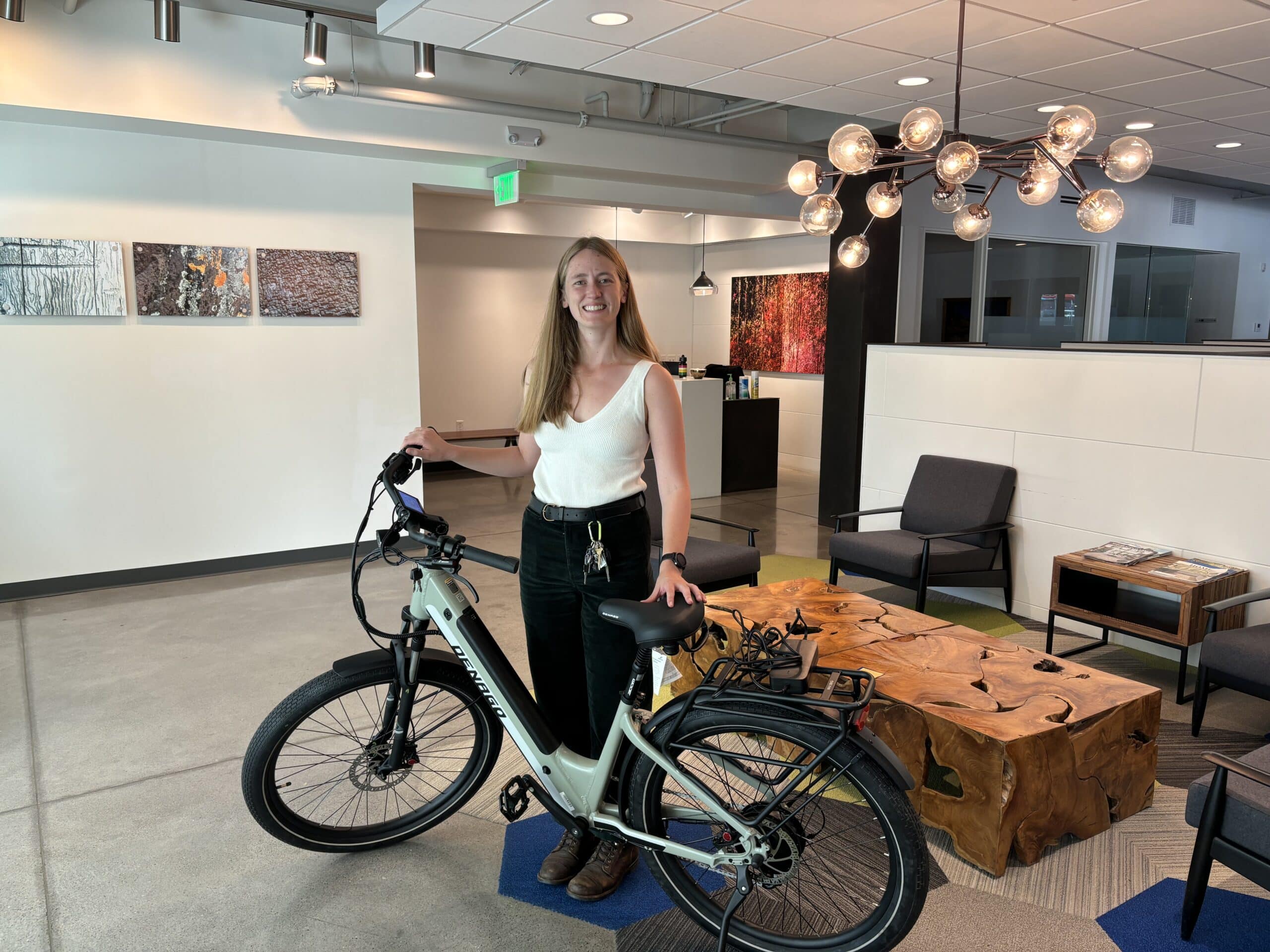Controversy is percolating here in Chicago over the ethics of being a jerk on the road. The specific question pondered is, “Are Reckless Driving and Biking Morally Equivalent?” This debate emerged – as most do these days – from a post on social media. It then crossed the evolutionary threshold into thoughtful journalistic query thanks to Streetsblog Chicago editor and Chicago Reader columnist, John Greenfield. Since motorized vehicles are bigger, heavier and faster than bicycles and therefore more likely to cause harm, he asked, is driving like a jerk worse than biking like one? No spoiler alert here. John interviewed an ethicist from the University of Illinois Chicago for his piece to create an interesting read which I recommend.
In Illinois, all road users, drivers and bicyclists alike, must be careful in their interactions with every other road user. That is clear and is as it should be. However, does being careful mean the same thing behind a set of handlebars as it does behind a driving wheel? Should the law require all roadway users to use the same amount of caution? Should pedestrians and bicyclists be required to use as much caution on the road as motorists? For a very long time, at least one state, California, has said “no.” Illinois should follow suit.
Drivers must use more care than pedestrians
As in Illinois, Californians using the road are required to use ordinary or reasonable care for their own safety as well as for the safety of others. “Ordinary care” is generally thought of as the sort of care used by the reasonably prudent person. This is the sort of care that would be employed by a regular hypothetical dude who is neither hyper-safety conscious nor particularly careless. The facts and circumstances in which the events took place are considered, here and in California, when determining whether ordinary care was indeed used. For example, ordinary care while driving a car in icy conditions will require a different amount of caution than when driving in dry conditions. In this context, California has taken a very pragmatic approach when it comes to instructing jurors regarding the duties of care for pedestrians and drivers. California courts are explicit when guiding jurors. They are instructed as follows:
“The duty to use reasonable care does not require the same amount of caution from drivers and pedestrians. While both drivers and pedestrians must be aware that motor vehicles can cause serious injuries, drivers must use more care than pedestrians.”
California Jury Instruction 710. (Emphasis is mine).
The Role of Juries in Bicycle Crash Cases
Personal injury cases in Illinois are generally decided by 12 regular people. A victim of injury (the plaintiff) alleges that one or more defendants (whether a person or corporation, partnership, etc.) acted badly thereby causing the harm. The “badness” of the conduct, or lack of it, is determined by the members of the jury based on what the law is. If the jurors agree that under the law the defendant(s) acted badly then they must determine how much money will help compensate the victim for his or her harms and losses. It is a huge, and sometimes taxing job. Juries make these determinations by listening to the evidence presented by all sides, then determining whether the defendant’s injury causing conduct violated the law. If so, the injury victim prevails and should be compensated.
It is natural for jurors to feel intimidated by this task. It is sometimes difficult to determine what really happened among competing versions of events. Further, how are they to know what the law is? Jurors are not trained in the law. Frankly, the lawyers on each side of the case are often not much help in this regard. They are advocates for their respective clients. How can they be trusted to accurately tell the jurors what the law says? This is where jury instructions come in.
Jury Instructions as a Guide for Decisions
At the end of the case, after all, sides have made their closing arguments, the judge reads jurors a set of written instructions telling them what the relevant law is. The instructions are just that; they guide jurors in how they are to set about deciding the case and rendering a decision. The content of the instructions to be read to the jurors is generally argued by the various sides in the litigation to the judge outside of the jury’s presence. The judge considers the arguments regarding how the jury should be instructed then renders a decision. He or she then reads the chosen instructions to the jury. The jury returns to their room for deliberation, using the instructions they have just heard as a guide for rendering a decision.
Adopting California jury instruction 710 in Illinois would greatly assist juries determining fault in cases involving drivers, pedestrians, bicyclists and other vulnerable roadway users. What I am proposing, to be clear, is not a change in the law; but clearer, better guidance to jurors. Authority for the use of the 710 instruction comes from the Supreme Court of California in Cucinella v. Weston Biscuit Company, 42 Cal.2d 71 (1954). In that matter, the court noted that “the elements of conduct entering into ordinary care or caution will vary and must be related to the particular circumstances involved, including the character of the act being performed.” Taking that basic principle into account the Court stated that juries when considering the degree of caution to be employed by various roadway users should be instructed that
[T]he elements of action constituting conduct which qualifies as ordinary care are those commensurable with the responsibility involved and depend on upon the character of the instrumentality being used or the nature of the act which is being performed, all as related to the surrounding circumstances.
The court held that because cars are capable of causing so much potential harm, drivers should be required to use greater caution than pedestrians. The court approved of two jury instructions which stated, in part:
“While it is the duty of both the driver of a motor vehicle and a pedestrian, using a public roadway, to exercise ordinary care, that duty does not require necessarily the same amount of caution from each. The driver of a motor vehicle, when ordinarily careful, will be alertly conscious of the fact that he is in charge of a machine capable of projecting into serious consequences any negligence of his own.
* * * * *
To put the matter in another way, the amount of caution required by the law increases as does the danger that reasonably should be apprehended.”
Just like icy pavement poses a greater threat of harm to drivers, motor vehicles pose a greater risk of harm than do other roadway users. Illinois juries should be explicitly instructed that they may take this intuitive truth into account when a vulnerable road user has been harmed by a driver. The California instruction only references pedestrians, and the Cucinella decision arose from a crash involving a pedestrian and a motor vehicle. However, there is no obvious reason why the rationale should apply to bicyclists as well. Like pedestrians, bicyclists are far less capable of potential harm than are drivers. The level of caution that bicyclists should be accountable to use should, therefore, be less than for drivers. Some will undoubtedly misconstrue this. To be clear, bicyclists own a duty of reasonable care to themselves and even more vulnerable road users like pedestrians. But the amount of caution required from drivers and cyclists should not be the same and jurors should be instructed as such. The harm causing the potential of their chosen vehicles is vastly different.
Such an instruction would be particularly useful in certain intersection crash cases. We see many cases in which a bicyclist is “t-boned” by a driver who has timed a traffic signal which changed as the cyclist made his or her way through the intersection. In Chicago at least, yellow lights last a mere three seconds. At many intersections, a cyclist (and certainly a pedestrian) may enter an intersection on a green, only to see the light change from yellow to red before making it to the other side. It happens a lot. On plenty of occasions, drivers see green lights like bulls see red and charge through intersections without looking for cyclists already proceeding across. But a driver’s duty is not merely to see green, but to see all there is to be seen, including bicyclists and pedestrians. Where a driver has failed to look and causes harm, a jury considering the matter would be aided by an instruction that reminds that driving a vehicle that has the potential to inflict significant injury requires the use of great caution.
Featured Image Credit: SFGate.com








